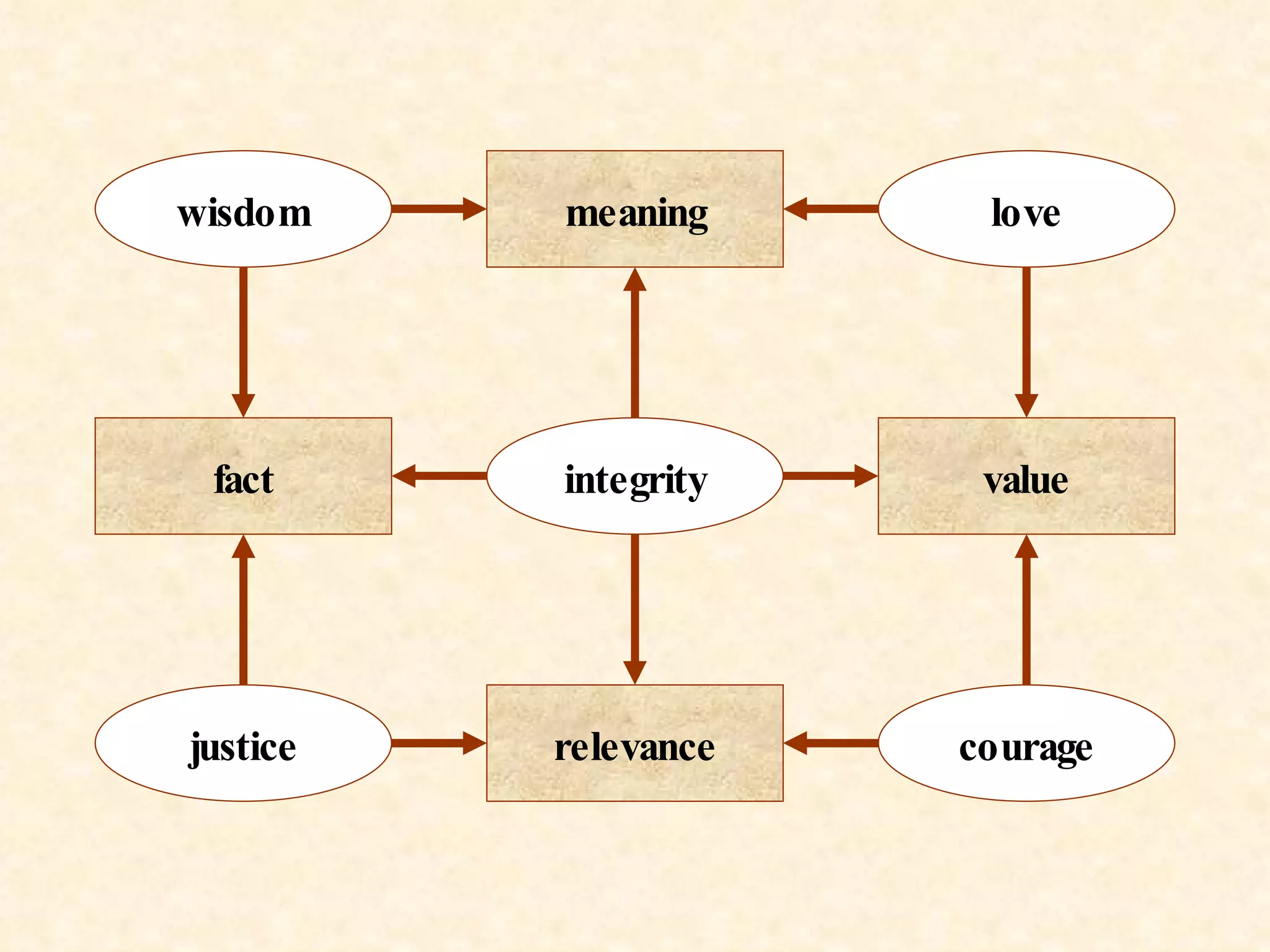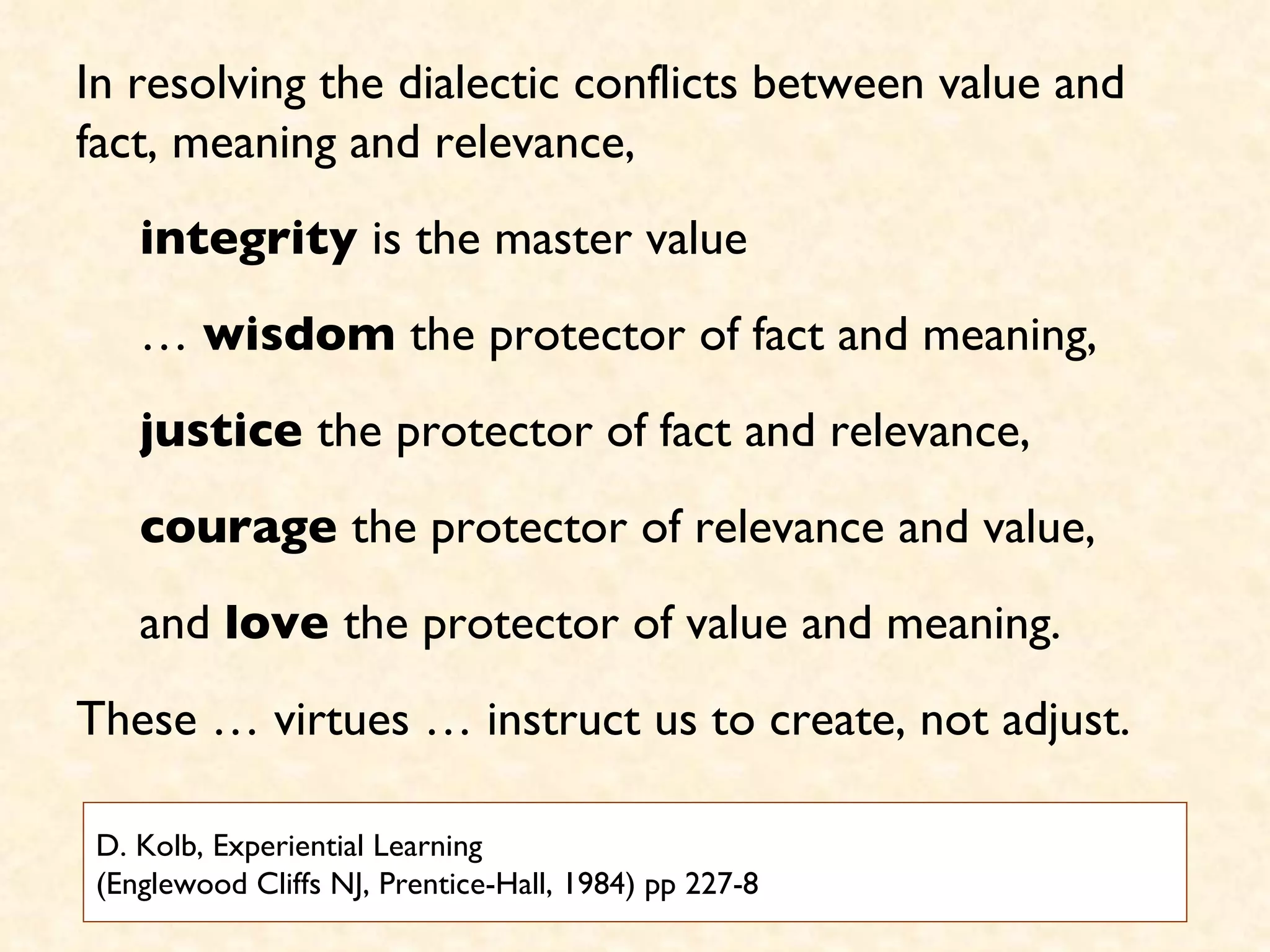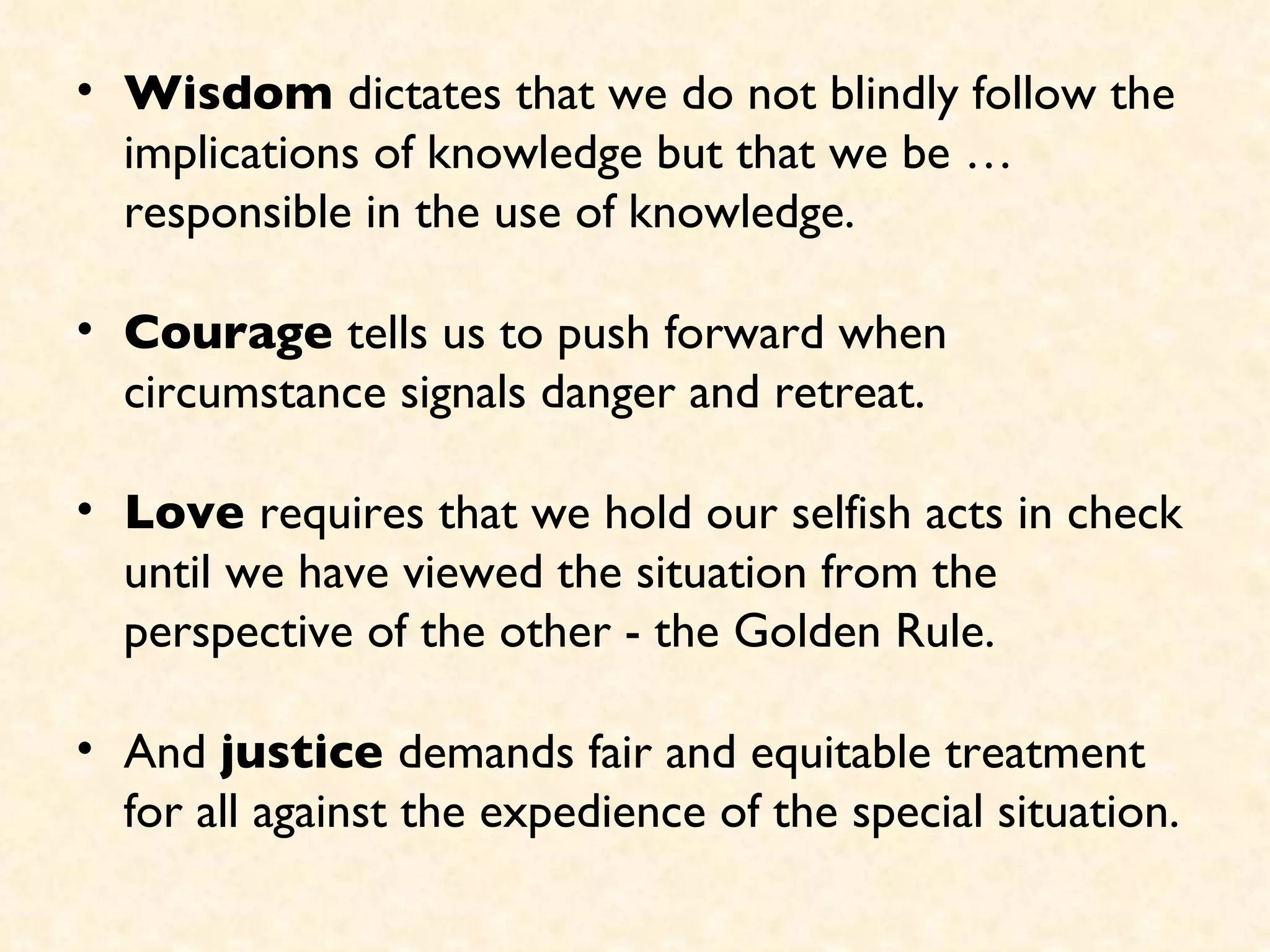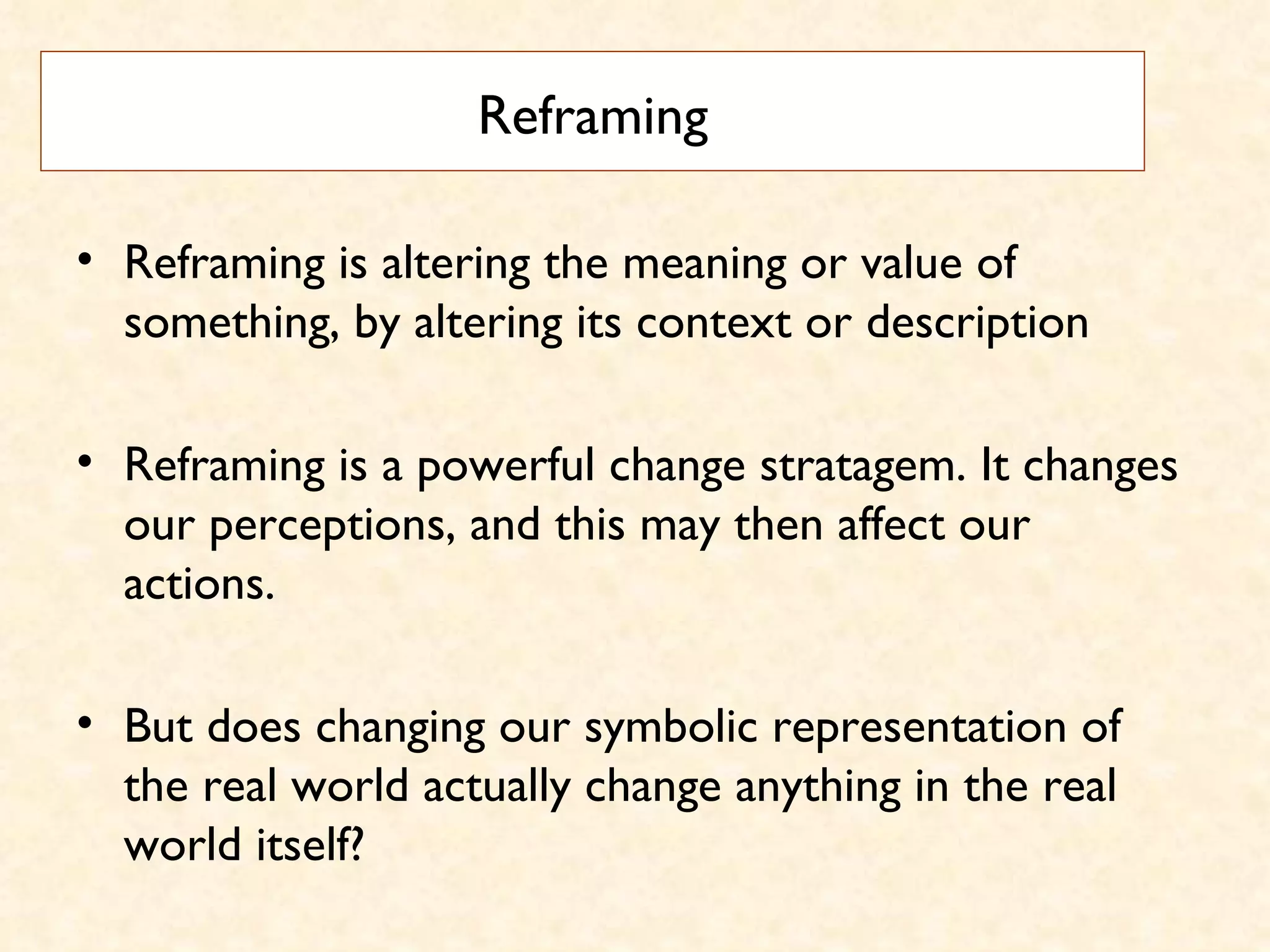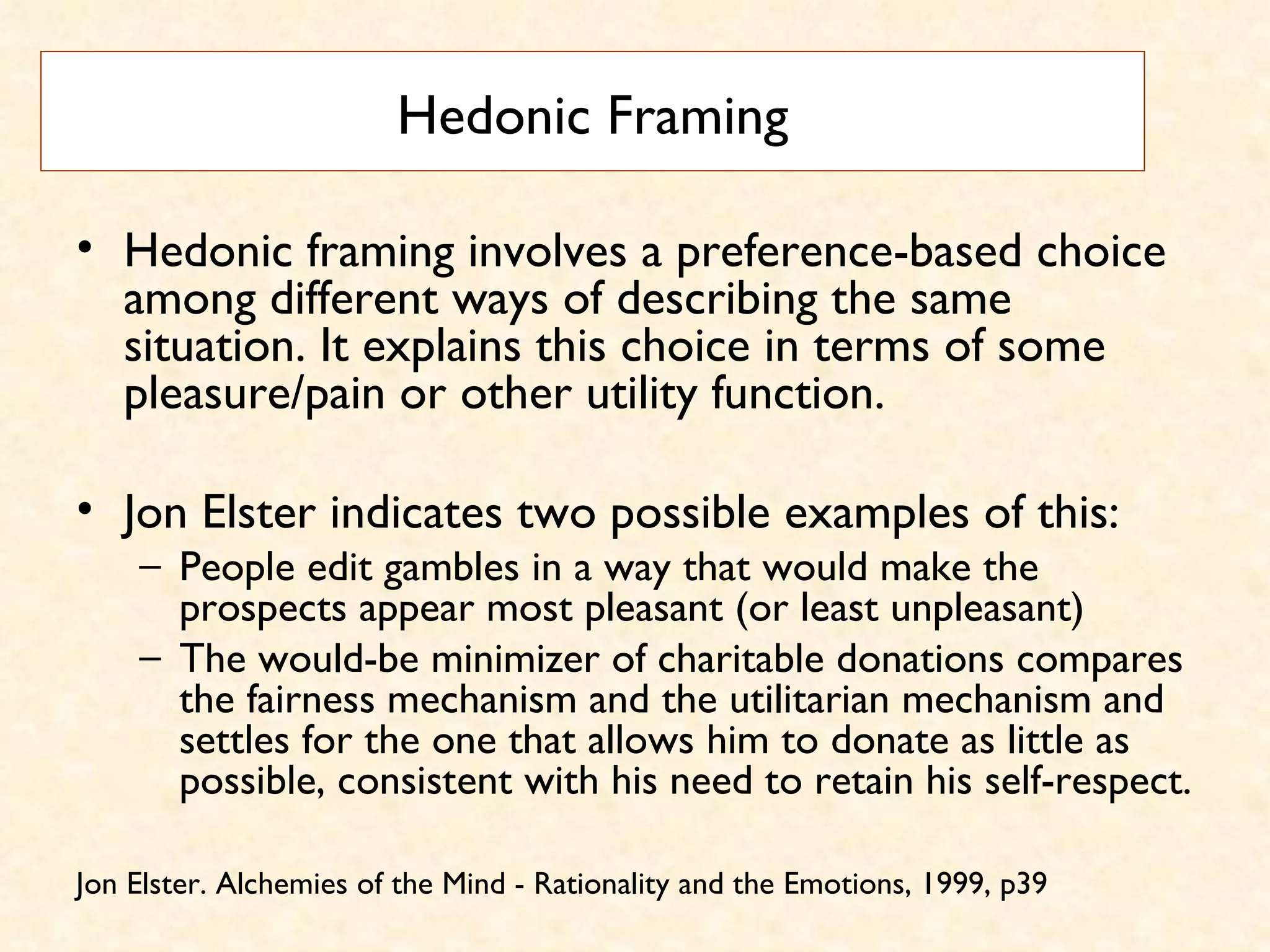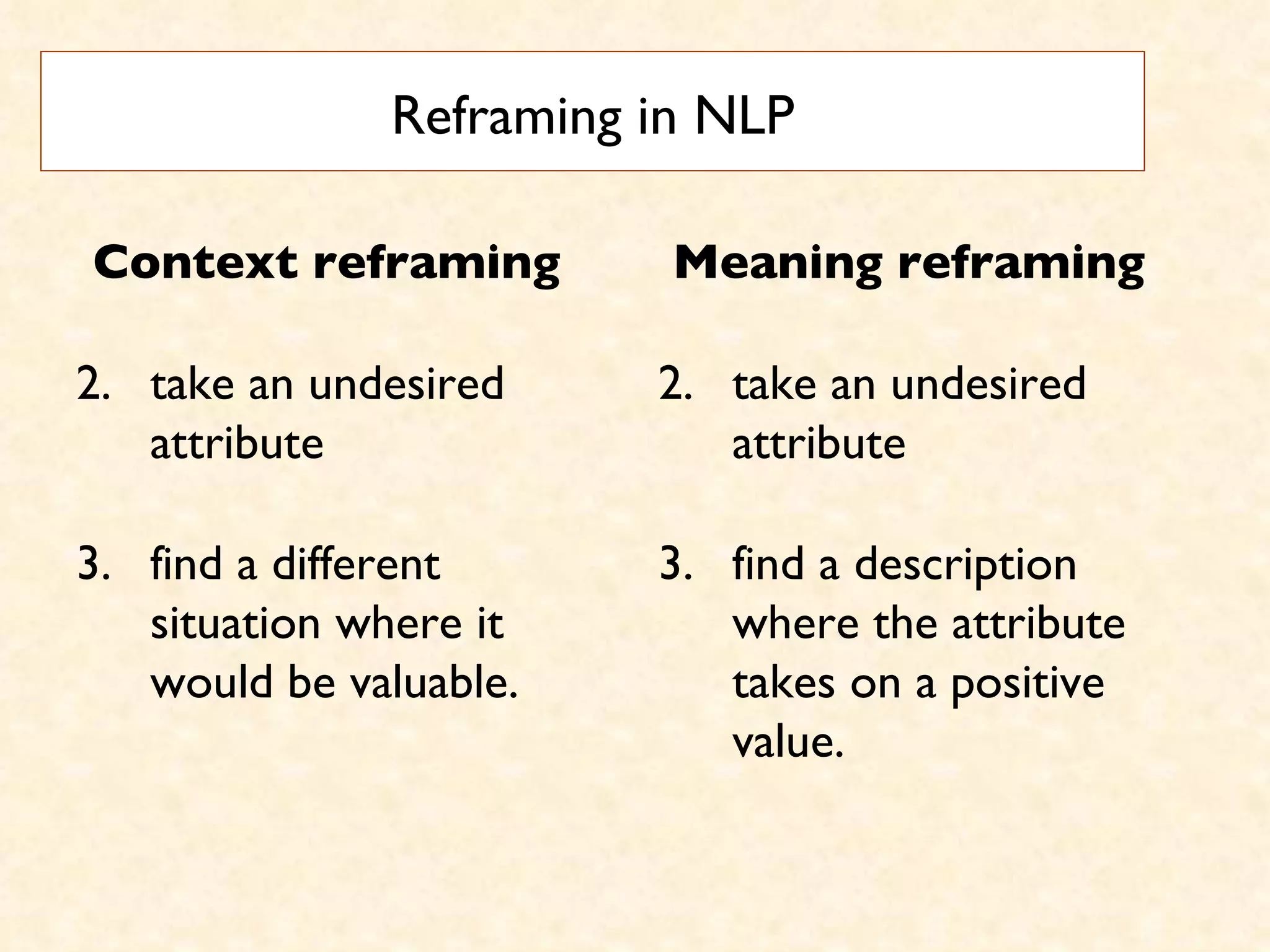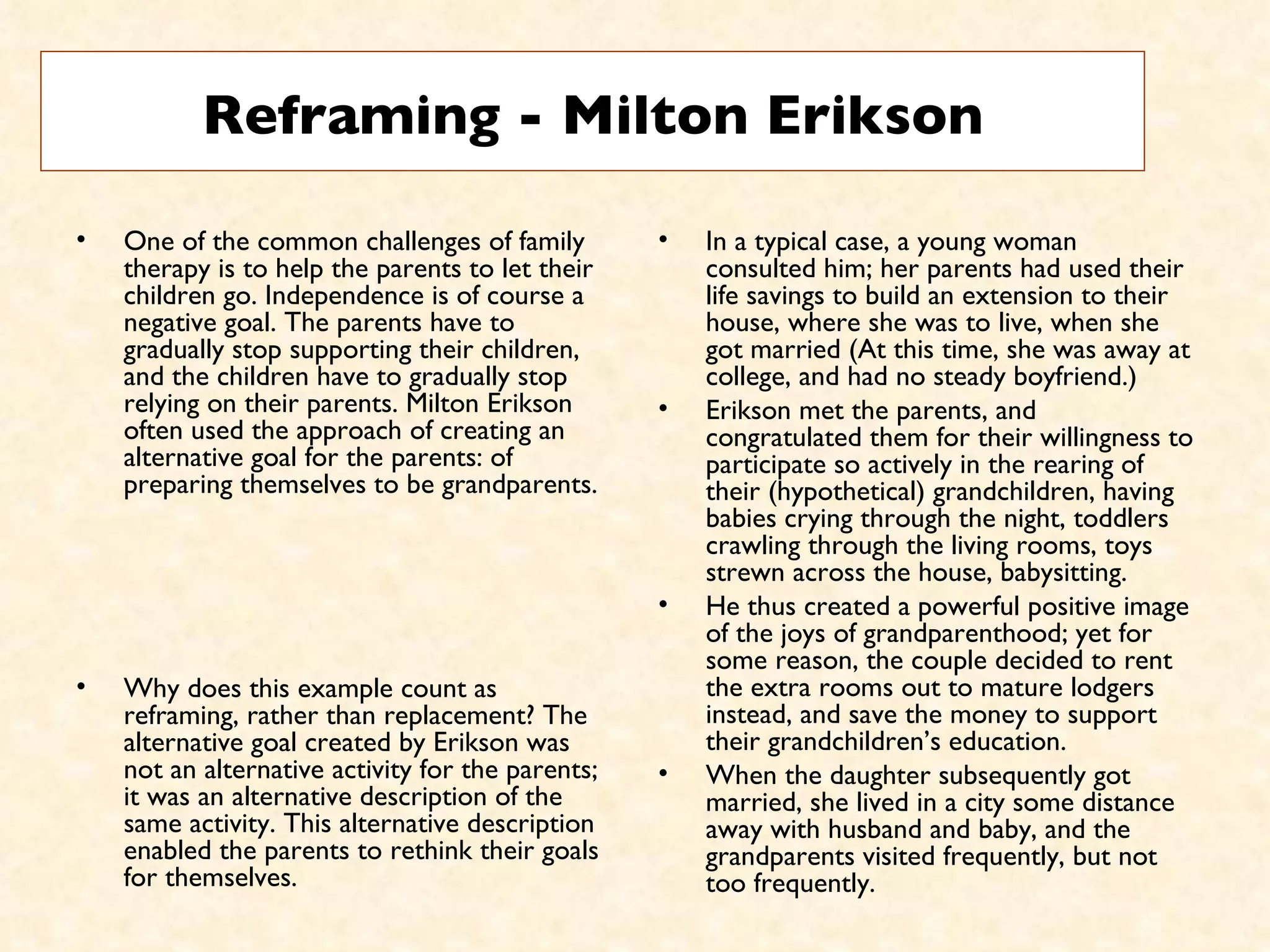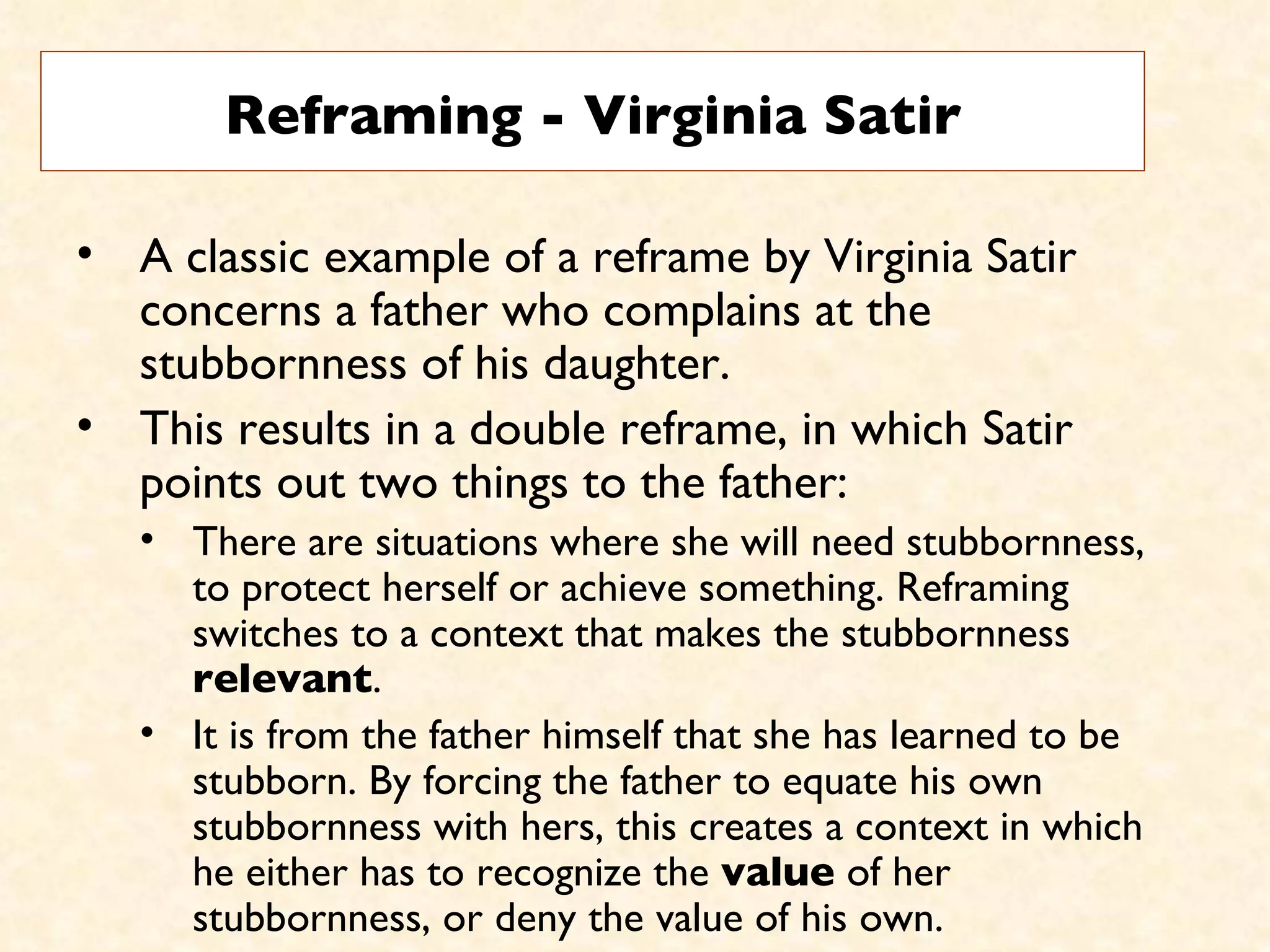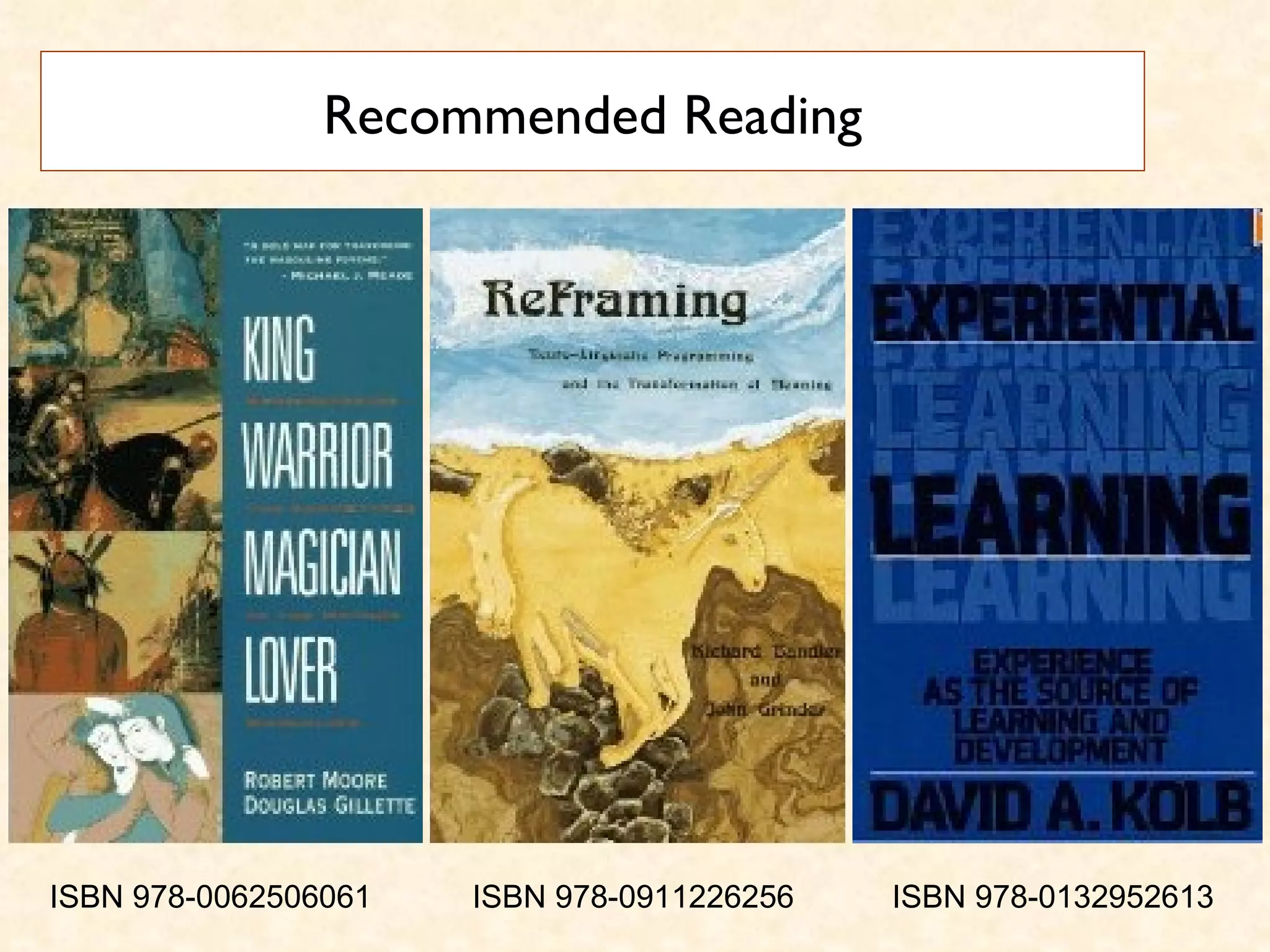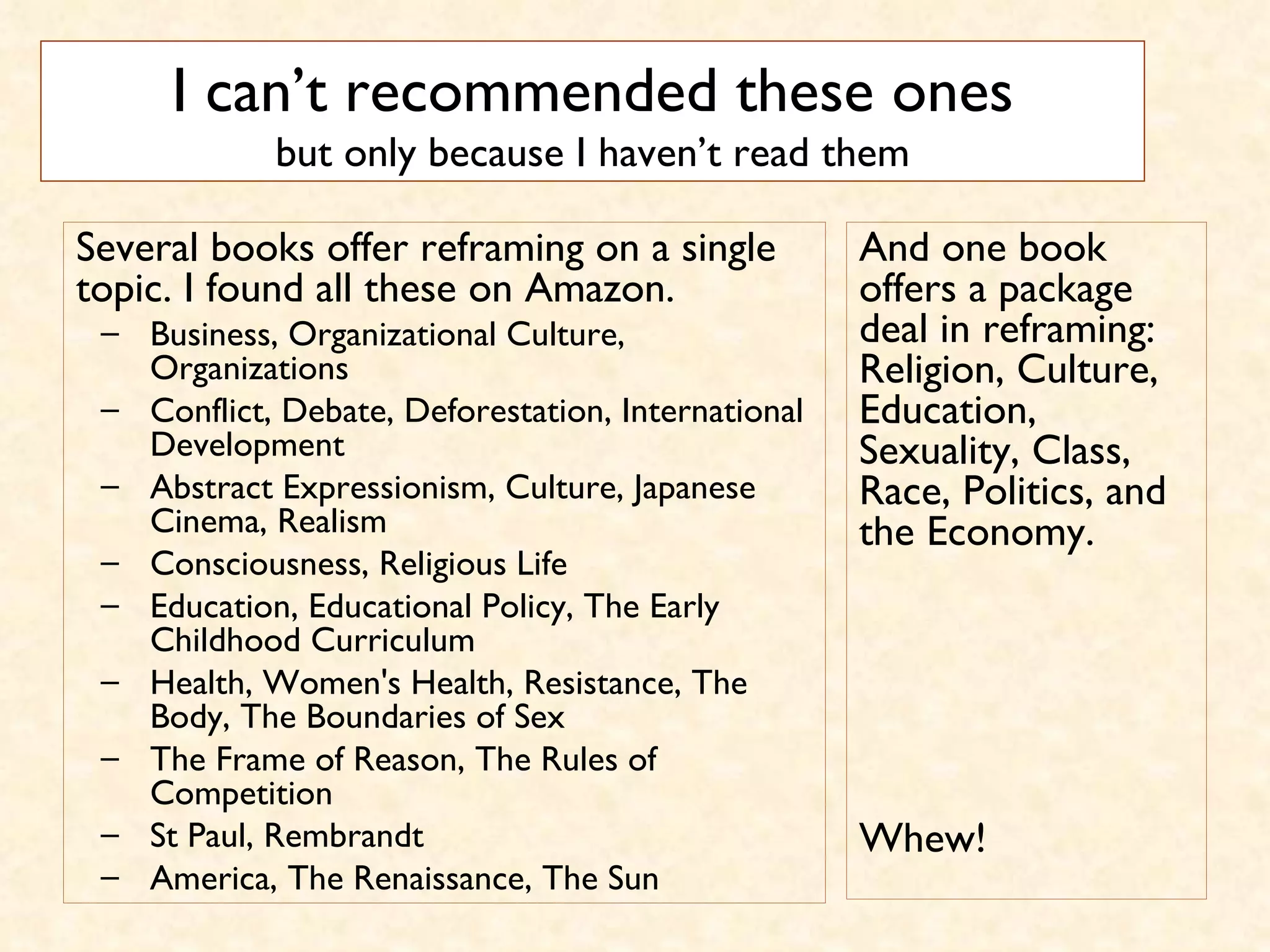The document discusses different concepts related to reframing such as integrity, wisdom, justice, courage, and love. It provides examples of reframing from different theorists including Milton Erikson and Virginia Satir. Erikson reframed independence as preparing for grandparenthood, while Satir reframed a father's complaint about his daughter's stubbornness by pointing out situations where it could be valuable or that he had taught it to her. The document also mentions hedonic framing and reframing attributes to find positive values.
